
Pool of Radiance is a role-playing video game developed and published by Strategic Simulations, Inc (SSI) in 1988. It was the first adaptation of TSR's Advanced Dungeons & Dragons (AD&D) fantasy role-playing game for home computers, becoming the first episode in a four-part series of D&D computer adventure games. The other games in the "Gold Box" series used the game engine pioneered in Pool of Radiance, as did later D&D titles such as the Neverwinter Nights online game. Pool of Radiance takes place in the Forgotten Realms fantasy setting, with the action centered in and around the port city of Phlan.
The Dark Eye is a German tabletop role-playing game with a high fantasy theme created by Ulrich Kiesow and launched by Schmidt Spiel & Freizeit GmbH and Droemer Knaur Verlag in 1984. It is the most successful role-playing game on the German market, outselling Dungeons & Dragons. Many years of work on the game have led to a detailed and extensively described game world.
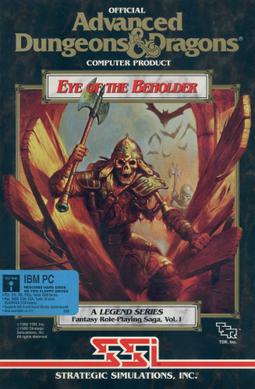
Eye of the Beholder is a role-playing video game for personal computers and video game consoles developed by Westwood Associates. It was published by Strategic Simulations, Inc. in 1991, for the MS-DOS operating system and later ported to the Amiga, the Sega CD and the SNES. The Sega CD version features a soundtrack composed by Yuzo Koshiro and Motohiro Kawashima. A port to the Atari Lynx handheld was developed by NuFX in 1993, but was not released. In 2002, an adaptation of the same name was developed by Pronto Games for the Game Boy Advance.

Pools of Darkness is a role-playing video game published by Strategic Simulations in 1991. The cover art and introduction screen shows a female drow. It is the fourth entry in the Pool of Radiance series of Gold Box games, and the story is a continuation of the events after Secret of the Silver Blades. The novel loosely based on the game was released in 1992. Like the previous games in the series, it is set in the Forgotten Realms, a campaign setting from Dungeons & Dragons. Players must stop an invasion from an evil god, eventually traveling to other dimensions to confront his lieutenants.
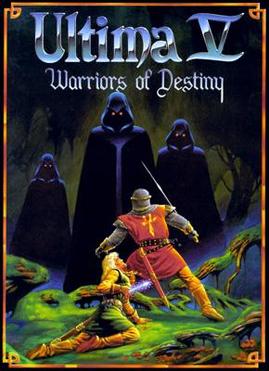
Ultima V: Warriors of Destiny is the fifth entry in the role-playing video game series Ultima released in March 1988. It is the second in the "Age of Enlightenment" trilogy. The game's story takes a darker turn from its predecessor Ultima IV. Britannia's king Lord British is missing, replaced by a tyrant named Lord Blackthorn. The player must navigate a totalitarian world bent on enforcing its virtues through draconian means.

Ultima VI: The False Prophet, released by Origin Systems in 1990, is the sixth part in the role-playing video game series of Ultima. It is the third and final game in the "Age of Enlightenment" trilogy. Ultima VI sees the player return to Britannia, at war with a race of gargoyles from another land, struggling to stop a prophecy from ending their race. The player must help defend Britannia against these gargoyles, and ultimately discover the secrets about both lands and its peoples.

The Bard's Tale II: The Destiny Knight is a fantasy role-playing video game created by Interplay Productions in 1986. It is the first sequel to The Bard's Tale, and the last game of the series that was designed and programmed by Michael Cranford.

Spellcraft: Aspects of Valor is a strategy game released for MS-DOS in 1992 by Asciiware. A Super Nintendo Entertainment System version was cancelled.

Realms of Arkania: Star Trail is a computer role-playing game by Attic Entertainment Software based on the German RPG system Das Schwarze Auge. The original German version of the game was released in 1994. Due to the success of its predecessor Realms of Arkania: Blade of Destiny, it was translated to English and released by Sir-Tech in the same year. An expansion, Speech Pack, was released in 1994 for the floppy disk version.
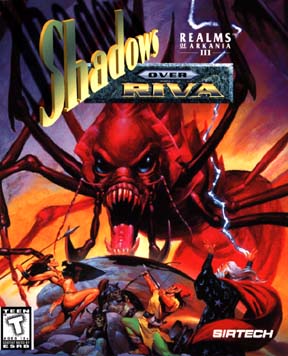
Realms of Arkania: Shadows over Riva is a role-playing video game based on the German role-playing game system Das Schwarze Auge by Attic Entertainment Software. It is the sequel to Realms of Arkania: Blade of Destiny and Realms of Arkania: Star Trail. The original German version of the game was published by TopWare Interactive in 1996. Sir-Tech released the English version in 1997.
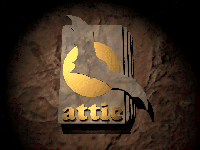
The Attic Entertainment Software GmbH was a German video game developer and publisher that was founded in September 1990 by Hans-Jürgen Brändle, Jochen Hamma and Guido Henkel in Albstadt, Baden-Württemberg. Attic has been inactive since 2001. The founder, Hans-Jürgen Brändle, was reported to have died in Las Vegas during the month of August, 2005.

Wings is a World War I video game developed and published by Cinemaware. It was released for the Amiga in 1990. The action sequences are similar in style to those of the 1927 silent film Wings.
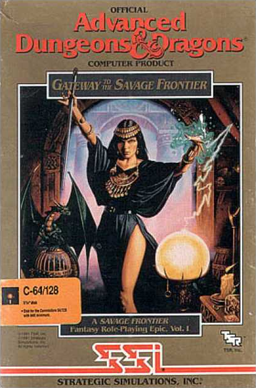
Gateway to the Savage Frontier (1991) is a Gold BoxDungeons & Dragons computer game developed by Beyond Software and published by SSI for the Commodore 64, PC and Amiga personal computers.
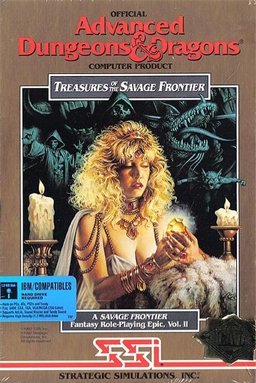
Treasures of the Savage Frontier (1992) is a Gold Box Dungeons & Dragons role-playing video game. It was developed by Beyond Software and published by SSI for the Amiga and DOS.

Champions of Krynn is role-playing video game, the first in a three-part series of Dragonlance Advanced Dungeons & Dragons "Gold Box" games. The game was released in 1990. The highest graphics setting supported in the DOS version was EGA graphics. It also supported the Adlib sound card and either a mouse or joystick.

Drakensang: The Dark Eye is a 2008 role-playing video game developed by Radon Labs and published by dtp. It is the first video game in The Dark Eye universe since Attic's Northlands Trilogy from the 1990s. it was followed by the prequel River of Time, which also received an expansion Phileasson's Secret. all of them were put in a collection that is referred as the Drakensang Saga.

Legend of Faerghail is a 1990 role-playing video game, developed by Electronic Design Hannover and published by reLINE Software for the Amiga, Atari ST and MS-DOS.
Pool of Radiance is a series of role-playing video games set in the Forgotten Realms campaign settings of Dungeons & Dragons; it was the first Dungeons & Dragons video game series to be based on the Advanced Dungeons & Dragons rules.

Drakensang: The River of Time is a role-playing video game developed by Radon Labs. Drakensang TROT is the second video game in The Dark Eye-universe since Attic's Northlands Trilogy from the 1990s.

Nemesis: The Wizardry Adventure is a 1996 adventure and role-playing video game developed and published by Sir-Tech. It is a spin-off of the Wizardry series of games. Ports for Sega Saturn and Microsoft Windows were released in Japan in 1998.


















